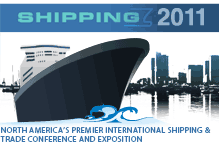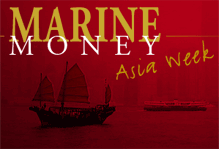
To be or not to be, a shipowner
Athens – Becoming a shipowner used to be the dream of all Greeks. Maybe it still is. The names of the best-known shipowners were recognised by all – Onassis, Lemos, Niarchos. Today it is Latsis and Kyriakou and others. Some of the richest people in the world enjoying a life of glitz and glamour.
In the past for many indeed the dreams came true. An ex-captain, perhaps together with some partners, put some cash together and bought his first ship. That may have been in the early 1970s and the first ship would have been built in the early 1950s. It would likely have been a mini bulker and of about 3,000 DWT. Operating expenses were low and today’s rules and regulation about ISM and vessel condition were distant. Port state control was virtually non-existent in those days and such a vessel would happily sail all over and in the good years of the early 1970s this little vessel paid back its investment in less than a year.
In the mid 1980s also, many Greek entrepreneurs entered shipping. The industry had gone through five years of a devastating depression. Modern vessels were cheap and elderly vessels were at scrap related prices and scrap was at $100 per LWT. So again with relatively little capital – $500,000 was enough to acquire and make shipshape a 16,000 DWT single-decker built in the late 1960s – many bought vessels, operated them and waited for a better market. And that better market came with a vengeance with such 1969 built vessels being sold for four times as much before the decade was out. Some Greek owners bought twenty such vessels so you can just imagine the money that was made at that time.
Deal of The Year – 2002 PUBLIC EQUITY
By comparison to 2001 when there were some high profile tanker listings in New York and some very public de-listings in Asia, 2002 felt like a quiet time in public equity in shipping. This was certainly not the case. There were significant share buybacks, IPOs, and de-listings/privatizations throughout the year.
The carnage in the overall markets seems to have caused this general image of inactivity, everyone seemed scared to even look. Indeed shipping had one of the greatest embarrassments with the forcible de-listing of ACLN - which was deeply embattled in December 2001 and was the first forcible de-listing in nearly 30 years from the NYSE in 2002 – and the subsequent and ongoing fraud suit brought by the US Securities and Exchange Commission. Fortunately the “biggest black eye” of shipping for 2002 is not an award, but if it was, ACLN would be it.
But it was not all bad. Indeed most shipping shares outperformed many major indexes including the S&P 500 and the Nasdaq composite. In fact, while the Dow 30 was relatively resilient this year, little shipping – with its largely illiquid small cap shares (which appeared to be an asset this year) – performed as well or better than the index. Share-wise on pure value, an investment in a shipping share this year was about as reliable as investing in a Dow 30 company. Wow.
EQUITIES Analyst of 2002
Since this time last year – when news of the Enron collapse was still fresh as was the image of the collapse of the Twin towers – the WorldCom debacle, Mr. Grubman and Citibank, Martha Stewart, Global Crossing and the Sarbanes-Oxley legislation have all passed-through against the backdrop of lowering interest rates and a skittish group of world stock markets creating a very thin margin of error for equity and debt analysts alike. There are calls in the US for analysis to be completely separated from the banking sector and, in the midst of this, many investment banks have tried to clarify their ratings systems by stopping altogether publishing target prices and limiting the meaning of their ratings.
This may or may not be a good development for investors. But for shipping equities which are illiquid for the most part – excluding the cruise sector which we largely consider leisure/hospitality stocks – in a cyclical industry it could reduce coverage. One small change in the environment for most any of these shares and there is a drastic swing in value. An even greater dearth of coverage could make this condition worse.
CRITEREA Because of this backdrop noted above, it is really difficult to empirically declare one shipping analyst better than another. It becomes a subjective enterprise in many ways. In fact its most important to note that few, if any, of the analysts cover the same group of shipping equities, so comparing one analyst to another in an empirical manner is basically not feasible. Therefore we will be giving out two awards to shipping equities analysts this year: The Marine Money Shipping Equities Analyst of 2002, which will be judged on empirical and subjective data compiled by Marine Money and the Marine Money Reader’s Choice Shipping Equities Analyst of 2002, which is chosen by the popular vote of a select polled group. No one analyst can win both.
Dialing for Deal makers
One of the most fun things about working at Marine Money is keeping track of the people that come and go from ship finance. Although there is a core group of about 30 banks that do 80% of the $30 billion in capital that is formed for bulk shipping each year, hardly a day goes by when we don’t receive inquiries from financiers interested in the business. Some are private equity investors, some are finance companies and others are regional banks or financial insurance providers that have stumbled onto the sector and want to leverage their expertise to do more business.
In addition to having strong relationships with the core capital providers, the new faces generally come to Marine Money first, by attending one of our events to gain knowledge and network, subscribing to the magazine, or by just surfing for “ship finance” on the web. We enjoy a very privileged position in the marketplace in that we have the opportunity to guide these new players and help them form an impression of the industry. Our message is always the same – stick with the right owners and work with the right bankers and ship finance is a relatively low risk business with steady deal flow and decent returns – but risk is lurking everywhere. Continue Reading
To Bunker Hedge?
By Gerard Bushey
To hedge, or not to hedge: that is the question:
Whether ’tis nobler in the pocketbook to suffer
The losses and bad credit of outrageous fortune,
Or to take arms against a sea of financial troubles,
And by opposing end them.
With sincere apologies to the Bard of Avon, the above fractured quote highlights the quandary presented to the management of all companies that conduct major business operations involving highly volatile cost components that are a large part of their expense structure. In the shipping industry two of the largest cost items are subject to a high degree of volatility. Interest expense and fuel costs are these two items. Of the two, fuel costs are unquestionably the most unpredictable. Continue Reading
10 Questions for McQuilling Brokerage, Mike Marco and David Saginaw Presiding
1. The VLCC market has been in the doldrums all year and regardless of improved scrapping; owners are still taking the low rates given to them. Why is this so?
Saginaw: The short answer to this question is that, because of a highly fragmented ownership and effective control profile of the VLCC fleet that precludes any sustained influence of tonnage supply on the marketplace, owners have little power to stipulate what rates are “given” to them by the market. They therefore can only decide to operate at these levels or stop operating, and incur some level of expense for “parking” their vessels. Depending on how long they plan to park, varying levels of not-insignificant costs will be incurred. Continue Reading
SHIP FINANCIER VIEWS ONCHOPPY MARKETS – A SURVEY
When Publisher Emeritus Jim Lawrence gets nervous about the financial markets, he’s very interested in hearing the opinions of others. Jim’s view is that market behavior is ultimately driven by sentiment, so he per – forms informal surveys (at the deli, around the water cooler, etc.) to determine what that sentiment is.
In that same spirit of folk economics, we thought it would be interesting to survey some of the leading shipowners, financiers and investors from around the planet to see what they think about the instability in the financial markets and what its impact on ship finance will be. The answers to our five questions are, of course, anonymous, but what you will see is that the people who own and finance ships are optimistic and see better days in the not so distant future. We provide summary statistics below followed by some the actual answers. Many thanks to our participants for their overwhelming response. Continue Reading
SembCorp Marine privatisation
By Phil Golding
SembCorp Industries’ decision to de-list shipyard subsidiary SembCorp Marine from the Singapore Stock Exchange is the latest act in Singapore’s yard restructuring saga – and another nail in the coffin of public equity for Asian shipowners.
Many commentators see the move as precursor to the merger of SembCorp and Keppel Corporation’s yard interests creating a single mega-yard in Singapore.
Temasek Holdings, the Singapore government holding company and the major shareholder in both SembCorp and Keppel, published a new charter earlier this month, proposing that government-linked companies (GLC s) should restructure along industry- focussed lines. Continue Reading
CP Ships: The Value of Goodwill
It is the rare item that inspires a bargain hunter to pay a premium. That’s why when CP Ships, whose very identity is defined by buying out-offavor companies, marched up to the Wall Street counter and ordered $200 million worth of bonds yielding 10.75%, the ship finance industry was momentarily in shock.
As details of the transaction were disseminated, the usual post-capital markets deal battle cries rumbled through the June air. “The company was skinned alive,” commercial bankers condemned. “The company’s management are amateurs!” pundits proffered. “Solly and MoStan came too late and destroyed the market for future issuers!” other underwriters uttered. We disagree.
As the fog of naiveté, competing interest, misinformation, and even bona fide bewilderment clears, let us remind you of a few compelling, and permanent, realities; (1) that one of the world’s smartest and most patient shipping consolidators chose to exchange 6% financing for 10% financing on the precipice of a capital markets meltdown; (2) that investors bought into an unsecured shipping deal amidst a truly horrible high yield market and an uncertain economic outlook and; (3) that the first liner company has been added to the ranks of quality high yield issuers – and will likely earn as much goodwill for our industry as Teekay, Stena and a few others have. Continue Reading
CLUB DEALS – THE ENIGMA
By Tim Cottew
This speech was originally presented by Mr. Tim Cottew at Marine Money’s 15th Annual Ship Finance Week in New York June 2002 and has ben rewritten with the authors consent for publication.
During my tenure as Chairman and CEO of Osprey Maritime Limited, our company raised financing to the tune of US$944m through a Club Deal involving fourteen banks in the syndicate to enable the acquisition of Gotaas-Larsen to be concluded. Although Osprey has since been taken over by John Fredriksen’s World Shipholding, no doubt this background encouraged Marine Money and the organizers to ask me to share my views on the structure of bank syndicates from a borrower’s perspective. I will endeavour to identify the challenges faced by all participants in such Club Deals – from the borrowers and the participating banks, their respective shareholders, financial advisors, third party observers such as analysts, the media and the ship-broking community to name but a few and to offer some observations on how I believe the relationships can be best managed for the benefit of the direct participants, namely the participating banks and the borrower. Continue Reading







